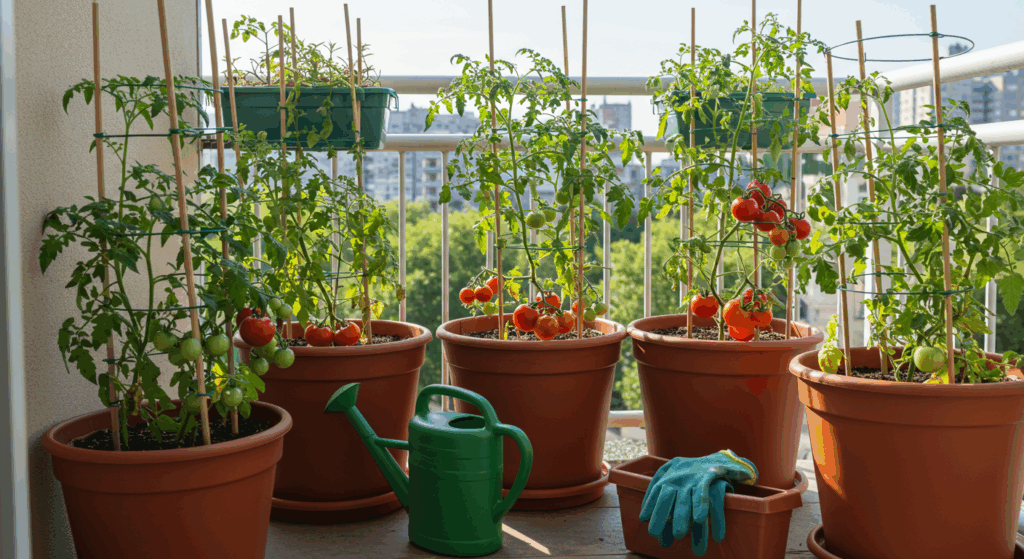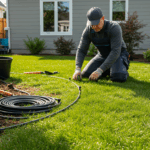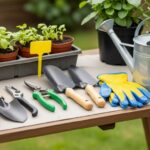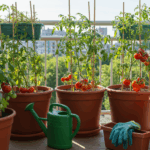Growing tomatoes in containers is a fascinating adventure that combines the love of gardening with the convenience of urban living.
Have you ever wondered if you could cultivate delicious, ripe tomatoes right on your balcony or small backyard?
If you are limited by space, yet yearn to savor home-grown produce, container gardening offers a viable solution.
This piece delves into the nuances of growing tomatoes in containers, providing you with insights and practical tips to successfully nurture your own mini tomato farm.
Choosing the Right Container
Selecting the right container is crucial to the success of growing tomatoes.
The size of the container can directly influence the growth and yield of your plants.
Generally, tomatoes require deep and wide pots to accommodate their root system.
A container with a minimum diameter of 18 inches is advisable for most tomato varieties.
Additionally, ensure the pot has adequate drainage holes to prevent waterlogging, which can lead to root rot.
Material choice is another consideration. While clay pots offer great breathability for roots, plastic containers retain moisture better, reducing watering frequency.
The weight and portability of the container are also important factors, especially if you plan to move your plants to follow the sun.
Understanding Tomato Varieties
Choosing the right variety of tomato for your container garden is vital. Not all tomatoes are suited for container growing, so it’s important to understand the basic varieties available.
| Variety | Growth Habit | Suitable Container Size |
|---|---|---|
| Cherry Tomatoes | Indeterminate | 14-18 inches |
| Bush Tomatoes | Determinate | 12-14 inches |
| Patio Tomatoes | Determinate | 12 inches |
| Heirloom Varieties | Indeterminate | 20 inches |
Indeterminate varieties grow continuously and require staking for support, whereas determinate varieties grow to a fixed height and are generally more compact.
For container gardening, determinate or smaller bush varieties are often preferred due to their manageable size and less demanding support requirements.
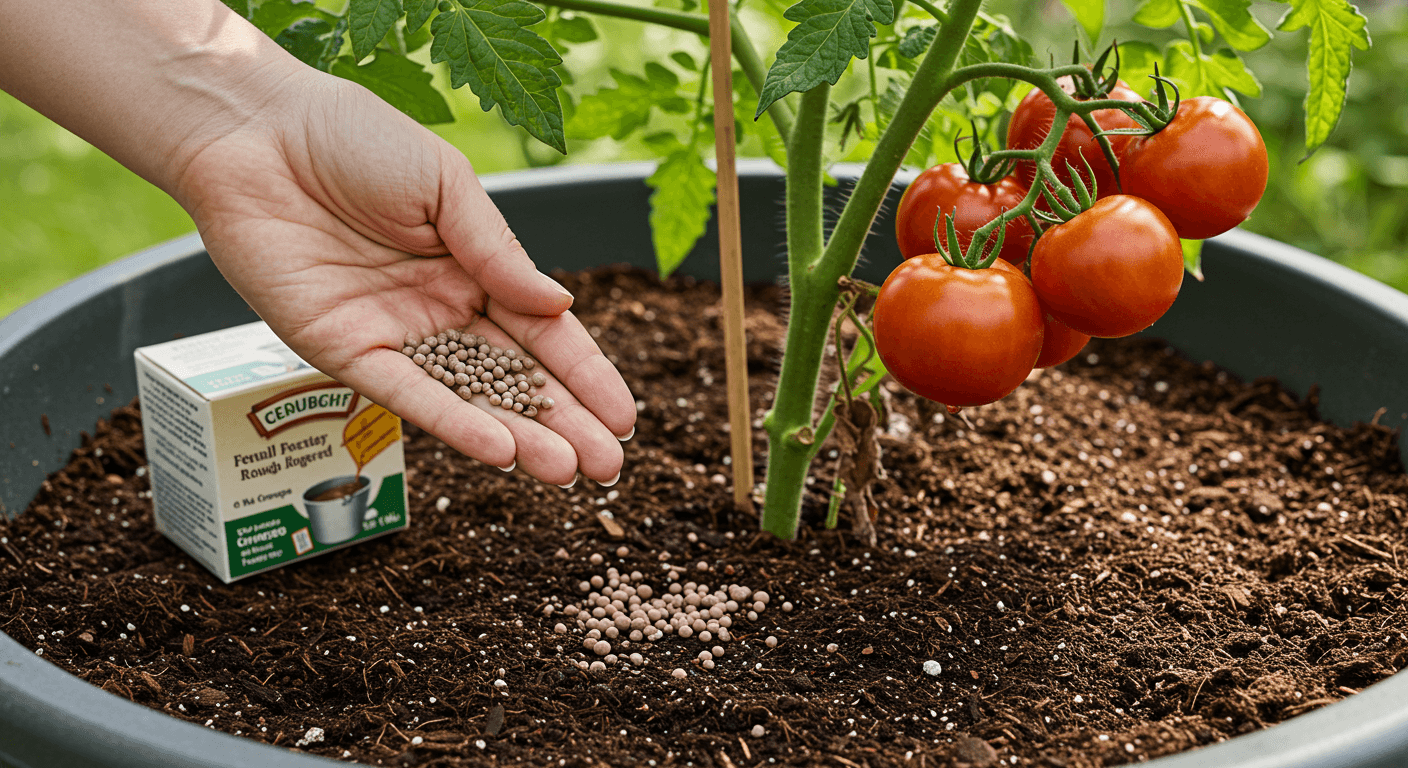
Soil and Fertilization
Ensuring your tomatoes have the right soil and nutrients is key to a fruitful harvest.
A high-quality potting mix designed for containers is best, as it retains moisture while providing good drainage.
Avoid using garden soil as it may compact in containers, restricting root growth.
Proper fertilization is also paramount. Use a balanced, water-soluble fertilizer to provide essential nutrients.
As tomatoes are heavy feeders, you might need to fertilize every couple of weeks, especially during the growing season.
Monitor the plants for signs of nutrient deficiencies, such as yellowing leaves, which can indicate the need for additional nutrition.
“The greatest fine art of the future will be the making of a comfortable living from a small piece of land.” – Abraham Lincoln
Watering Techniques
Watering container-grown tomatoes requires a careful balance. Tomatoes prefer consistent moisture, so it’s necessary to water the plants regularly.
However, over-watering can be just as damaging as under-watering. It’s essential to water when the top inch of soil feels dry to the touch.
Consider using mulch over the top layer of soil to help retain moisture and reduce evaporation.
This can be particularly beneficial during hot days when water loss is at its maximum. Additionally, self-watering pots can be an excellent investment, offering consistent moisture levels without daily attention.
Sunlight Requirements
Tomatoes thrive in sunlight, needing at least six to eight hours of direct sunlight daily.
Position your container in a sunny location, such as a south-facing balcony or terrace.
If full sun is limited, you might need to move the pots to catch different angles of the sun throughout the day.
If indoor growing is necessary, consider using grow lights to supplement natural light.
LED grow lights are particularly effective for providing the full spectrum of light that tomatoes require for photosynthesis and healthy growth.
Pest Management
Even in a controlled environment like container gardening, pests can pose significant challenges.
Common tomato pests such as aphids, whiteflies, and spider mites can still find their way to your plants. Regular inspection can help in catching these problems early.
Introduce natural predators like ladybugs or use organic insecticidal soap to manage infestations.
Another preventive measure is to interplant with pest-deterrent herbs such as basil or marigold, which can help repel unwanted insects naturally.
Supporting Your Plants
Tomato plants, especially indeterminate varieties, require support to keep them upright and maximize exposure to sunlight and air circulation.
Use stakes, cages, or trellises to provide adequate support.
Investing in a sturdy tomato cage can simplify training and managing the plant as it grows.
- 1- Staking involves tying the plant to a single support.
- 2- Cages offer a structure for the plant to grow through and around.
- 3- Trellises allow maximum exposure and can support multiple plants.
Regularly check that your supports remain strong and secure, adjusting ties as necessary to prevent damage to the plant.
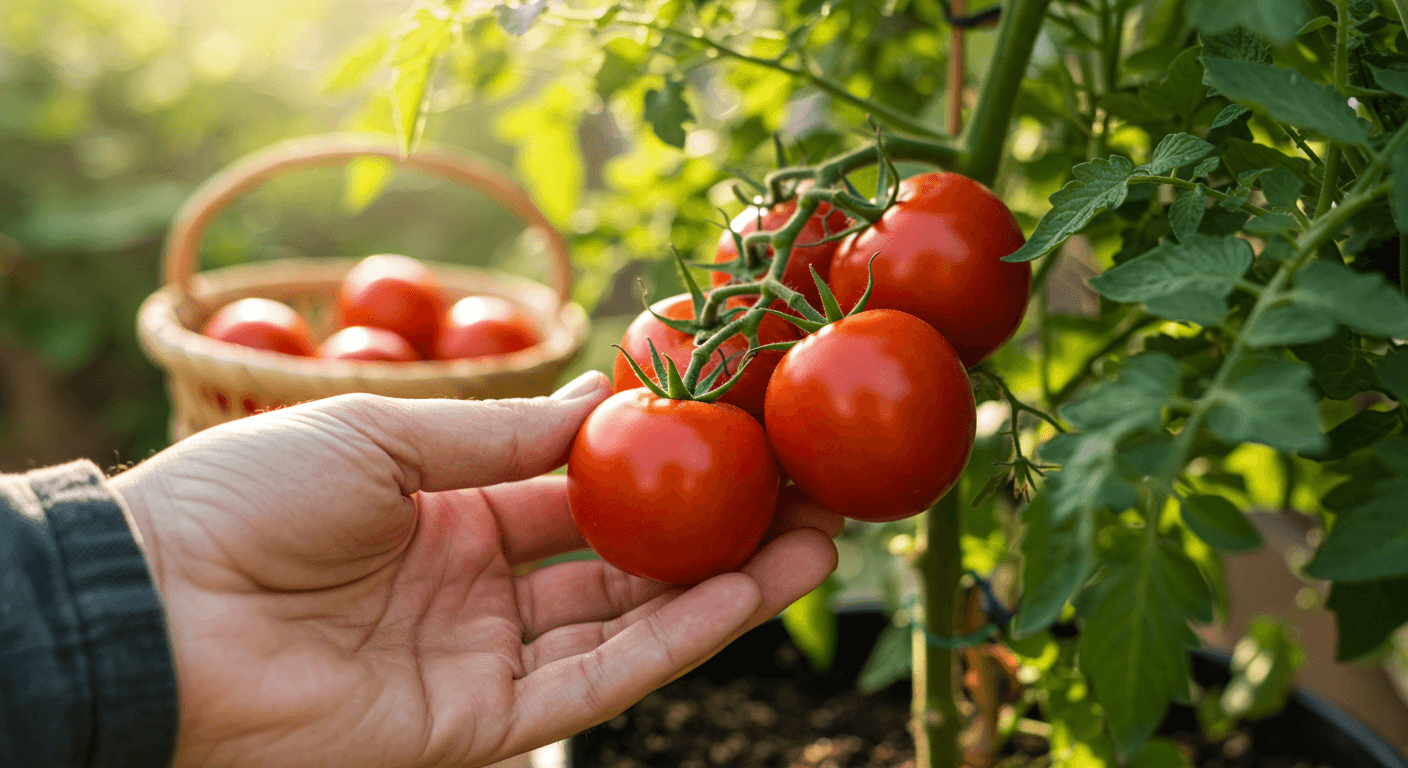
Harvesting Tips
The joy of growing tomatoes in containers culminates in the harvest. Knowing when and how to pick your tomatoes ensures you enjoy the best flavor your plants can offer.
Tomatoes are best harvested when fully colored and slightly soft to the touch.
For determinate varieties, most of the fruit ripens around the same time, making for a bountiful harvest period. Indeterminate varieties will continue to produce throughout the growing season, allowing for periodic harvesting.
Harvest in the morning when temperatures are cooler to minimize stress on the plant, gently twisting the fruit off the vine to avoid damage.
Common Tomato Growing Issues
Growing tomatoes is not without its challenges, even in controlled container environments.
Blossom end rot, for instance, is a common problem characterized by black spots on the fruit. This is often due to inconsistent watering or calcium deficiency.
Monitoring for diseases such as blight is also crucial. Signs include yellowing leaves and brown spots. Remove affected foliage and use fungicides when necessary to control disease spread.
Ensuring good air circulation, adequate spacing, and avoiding overhead watering can reduce the risk of fungal diseases.
FAQ – Common Questions
How often should tomatoes in containers be watered?
Water them when the top inch of soil feels dry, usually every 2-3 days. Mulching can help retain moisture.
Can tomatoes grow in partial shade?
Tomatoes require at least 6 hours of direct sunlight for optimal growth. Less light can lead to reduced yields.
Do I need to prune container-grown tomatoes?
Pruning is beneficial for indeterminate varieties as it helps control size and improves air circulation.
What’s the best way to fertilize container tomatoes?
Use a balanced water-soluble fertilizer every 2 weeks, adjusting as needed based on plant health.
Are heirloom tomatoes suitable for containers?
Yes, but choose determinate or compact varieties and ensure they have adequate space and support.
What are the signs of overwatering?
Wilting leaves, foul odor from the soil, and waterlogged drainage holes indicate overwatering.
Conclusion
Growing tomatoes in containers provides an incredible opportunity for urban gardeners to enjoy fresh produce from the comfort of their own homes.
It requires attention to detail, from choosing the right container and plant variety to ensuring optimal conditions for growth.
Although challenges such as pests and diseases can arise, proactive management ensures a healthy and productive tomato crop.
Embrace the journey of container gardening, and you will be rewarded with flavorful, home-grown tomatoes that rival any store-bought produce.

